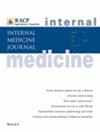Association between Full Moon Day overdose-related intensive care unit admissions and hospital mortality: a medical enigma or mere myth?
Abstract
Background
There is limited evidence on whether Full Moon Day is linked to drug overdoses severe enough to need intensive care unit (ICU) admissions.
Aims
To investigate the association between Full Moon Day overdose-related ICU admissions and hospital mortality.
Methods
This retrospective multicentre observational study that included data from 172 ICUs across Australia and New Zealand reported to the Australia New Zealand Intensive Care Society Adult Patient Database. We included all adult (≥16 years) patients admitted to an ICU following an overdose between 1 January 2018 and 31 December 2023. The primary outcome was the prevalence of overdose presentations. The secondary outcome was hospital mortality. We used logistic regression models to investigate the association between Full Moon Day overdose and hospital mortality, after adjusting for key confounders. We also analysed this association in a subgroup based on sex.
Results
We included 25 577 patients; 4426 (17.3%) were admitted on Full Moon Day. The prevalence of overdose-related ICU admissions for Full Moon Day was similar to those on other lunar days (mean prevalence: 1.4% (standard deviation (SD) 0.6%) vs. 1.4% (SD 0.2%)). The hospital mortality was comparable in both groups of patients (1.3% vs. 1.3%; P = 0.99). There was no association between Full Moon Day overdose-related ICU admission and hospital mortality (adjusted odds ratio = 1.10; 95% confidence interval: 0.77–1.57; P = 0.60). This relationship was consistent in both male and female patients.
Conclusion
This large registry-based study found no difference in overdose-related ICU admissions between full moon days and other lunar days, with no association with hospital mortality. This reinforces that the full moon's influence on overdose admissions to the ICU is a myth.


 求助内容:
求助内容: 应助结果提醒方式:
应助结果提醒方式:


